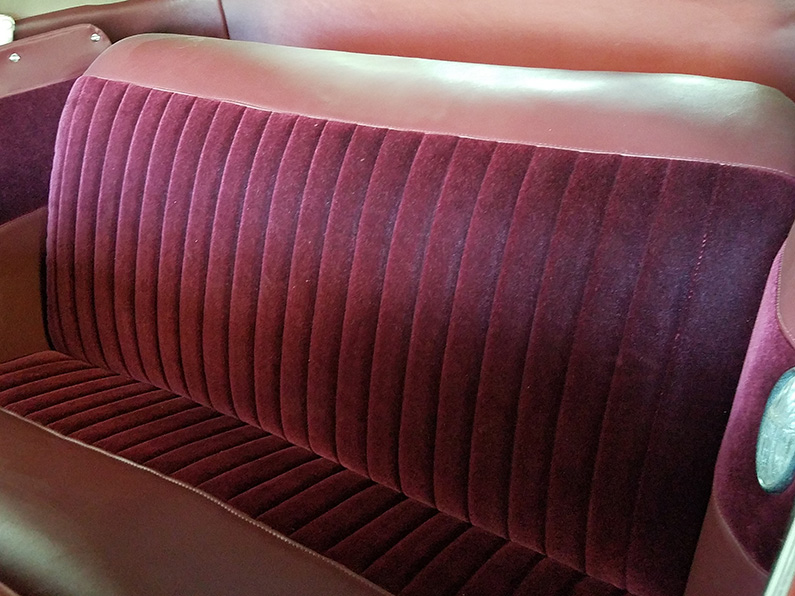Expert Upholstery Repair: Breathe New Life Into Your Furnishings
Uncover Top Tips for Furniture Repair Work Projects
Starting an upholstery fixing task can be a difficult job for many, particularly for those not familiar with the complexities of furnishings reconstruction. The trip of reviving damaged or worn-out furniture calls for an eager eye for information, a steady hand, and a repertoire of useful suggestions and techniques. As we explore the realm of upholstery repair work, we will certainly uncover crucial understandings that can make a considerable difference in the end result of your remediation ventures. From choosing the ideal textile to understanding the art of reupholstering, each action holds its very own collection of difficulties and incentives. Let's begin this trip of untangling the leading ideas for furniture repair work jobs.
Selecting the Right Textile

Necessary Devices for Upholstery Repair
When embarking on furniture fixing jobs, having the right devices is essential for accomplishing effective outcomes. Among the important tools for upholstery fixing is a standard gun. A staple weapon is vital for protecting textile and batting to the furniture frame. It's advised to utilize a heavy-duty staple gun for furniture jobs to make certain that the staples penetrate through the fabric and into the structure firmly. Furthermore, having a good set of sharp scissors is vital for reducing material with accuracy and accuracy. Material shears are developed to reduce through textile easily without creating rugged or fraying edges.
An additional necessary tool for furniture fixing is a rubber mallet. A rubber mallet serves for delicately tapping and protecting furniture materials into place without damaging the furniture structure. In addition, having a joint ripper is useful for meticulously removing old stitches and seams without causing damages to the fabric. Last but not least, a durable pair of needle-nose pliers is crucial for taking out tacks or staples and for holding tiny products firmly throughout the furniture repair process. These devices are vital for any upholstery repair service job and can make the task simpler and more reliable.
Repairing Rips and Holes
Fixing splits and holes in upholstery requires mindful interest to detail and precision to make certain a smooth repair that restores the integrity of the furnishings piece. When resolving openings or splits, start by cleaning the damaged area to eliminate any type of particles. For little openings, think about using a spot that matches the upholstery product. Use a small quantity of fabric adhesive around the edges of the hole, carefully place the spot over it, and push down strongly. For larger splits, use a needle and string to meticulously sew the sides back together. Guarantee the thread color matches the furniture for a discreet repair service. Use a small quantity of material adhesive to secure any type of loose sides as soon as the tear is sewn up. Enable the adhesive to completely dry completely before using the furnishings. Bear in mind that fixing tears and openings immediately can protect against additional damages and extend the life of your furniture.
Upholstery Cleaning and Maintenance
Upholstery cleaning must be approached with care, taking into consideration the kind of material and any kind of particular cleansing directions given by the producer. Vacuuming furniture consistently aids eliminate dirt, dirt, and debris that can wear and build up down the textile over time - upholstery repair.
In enhancement to cleaning, appropriate maintenance of furniture involves have a peek here rotating paddings on a regular basis to ensure even use and maintaining a constant level of convenience. Keeping upholstered furniture out of straight sunshine and away from warmth sources can additionally stop fading and damage to the material.
Tips for Reupholstering Furniture
Reupholstering furniture needs meticulous focus to information and an eager eye for craftsmanship to achieve a refined and expert result. Prior to beginning the reupholstering process, meticulously evaluate the problem of the piece and determine if it is worth the time and effort. Select high-grade textile that enhances the furniture's style and take into consideration the sturdiness of the product, particularly for often used pieces. When eliminating the old fabric, take note of how it was affixed and any kind of cushioning or padding used. This will certainly act as a guide when using the new upholstery. Ensure to gauge and cut the textile specifically to stay clear of any kind of wrinkles or great post to read bunching. Usage ideal devices like a staple gun, needles, and string to protect the textile firmly and neatly. Pay attention to the edges and sides to produce a tidy and expert coating. Last but not least, take your time and job methodically to attain a reupholstered item that looks comparable to new.
Conclusion
Finally, furniture repair tasks need cautious factor to consider of fabric options, essential tools, repair service strategies for openings and rips, cleansing and maintenance methods, and reupholstering pointers (upholstery repair). By complying with these leading pointers, people can successfully recover and keep the quality of their furnishings. It is vital to approach furniture repair work projects with the ideal understanding and devices to make certain an effective outcome
